 According to the Passenger list of the BERG CHINA, which sailed from Rotterdam in Holland on 20 March 1688, my first French ancestors arrived in Table Bay, South Africa, on 4 August 1688. Huguenot, or French Protestants - members of the Reformed Church which had been established in 1550 by John Calvin – the husband is reputed to have carried with him a Bible hidden in a loaf of bread.
According to the Passenger list of the BERG CHINA, which sailed from Rotterdam in Holland on 20 March 1688, my first French ancestors arrived in Table Bay, South Africa, on 4 August 1688. Huguenot, or French Protestants - members of the Reformed Church which had been established in 1550 by John Calvin – the husband is reputed to have carried with him a Bible hidden in a loaf of bread. Individual Huguenots had settled at the Cape of Good Hope from as early as 1671, but after a commissioner had been sent out from the Cape Colony in 1685 to attract further settlers, an organized, large-scale emigration of Huguenots to the Cape of Good Hope took place during 1688 and 1689, among them, as already mentioned, my mother’s ancestors from La Motte d'Aigues in Provence, fleeing from their country after the revocation of the Edict of Nantes.
This was a law promulgated by Henry IV of France in 1598, granting religious liberty and full civil rights to the Protestant Huguenots, but the revocation of the edict by Henry’s grandson, Louis XIV, in October 1685, brought an end to that freedom, declaring Protestantism illegal in terms of a new law. The persecution that ensued was nothing short of horrendous, and as the penalty often included burning at the stake, it was small wonder that the Huguenots were eager to take advantage of the invitation to emigrate to the Cape of Good Hope. - Le Cap de Bonne-Espérance. - The name alone must have spelled hope to them.
No existing document paints a more vivid picture of the suffering the Huguenots had to endure before fleeing their homeland, than the leaflet that came with a Huguenot Cross given to me by a friend. As the leaflet was creased, torn, and had been badly photocopied,it was difficult to patch together, and I am indebted to my son for helping me to fill in the gaps.
THE STORY OF THE HUGUENOT CROSS.
Over the years there has been much speculation, and many different stories have been exchanged about the origins of the Huguenot Cross. However,the consensus seems to be that it was worn for the first time in the Cevennes. — As the pamphlet suggests, it was a cross that 'evolved through tragic circumstances!'
During the persecution of the Huguenots, their religious gatherings had perforce to be kept secret. They were usually held in caves and other clandestine places, and directed by one of the members. In the case of weddings and christenings they had to wait until a preacher was in the neighbourhood.
We learn that one day, somewhere in the Cevennes, a group of Huguenots had gathered, and the preacher was already engaged in marrying four young couples when the dreaded French Dragoons appeared on the scene. Many of the Huguenots succeeded in escaping, but two of the bridal couples were apprehended. In the nearest town they were given the choice: “Become Roman Catholics or die at the stake!” but, undaunted, they refused to recant their Huguenot convictions.
What I find most appalling is that the piles of wood prepared on the market square for the burning of the youthful couples, were arranged in such a way that the condemned could watch each other burn to death; however, betraying no fear, the four doomed young people sang while they were brought closer and bound, each to a stake.
It is said that their psalms rose to heaven along with the flames, until their voices faded into silence.
Suddenly, from the crowd, a woman's voice called out: “I see the flames rise to heaven. They unite in a mighty dome of fire, and in the centre it shoots its rays to the North, the South, the East and the West — the Morning Star! The sign of our Master, Jesus Christ! Praise the Lord! He is with us to the end!”
A metal worker from Nimes, who saw and heard everything the woman had said, subsequently made a kind of medallion, approximately the size of a five-cent piece. "The nucleus resembled the Maltese cross (the symbol of the Crusaders) and the four arms of the cross were linked with a smaller circle’, which refers to the flames that united them. The space between the arms was fashioned in the shape of a heart. The four hearts are to remind us of the love of the two young couples who, remaining steadfastly true to their faith, were burnt at the stake on their wedding day."
This Medallion was afterwards adopted by the Huguenots as their symbol.
In time to come the cross was not only made from iron, but also from silver, and even gold. The dove was added to represent the Holy Ghost. After the dreadful persecutions following the revocation of the Edict of Nantes, it was replaced with a pearl, symbolizing a tear. My own cross still has the dove.
The Huguenot cross is a symbol of steadfast conviction — a faith so strong that it did not even fear the stake. Descendants of the Huguenots are not allowed to forget their origins, nor to consider their religious precepts merely superficial.
St. Bartholomew's Day.
What has been described as one of the most horrifying holocausts in history - the infamous St. Bartholomew's Day Massacre - took place on August 24, 1572 when, beginning in Paris, French soldiers and members of the Roman Catholic clergy fell upon the unarmed Huguenots. It is said that blood ‘flowed like a river’ throughout the entire country, and an estimated 100,100 Protestant men, women and children were killed. Soon, we are told, the rivers of France were filled with so many corpses that, for many months, the fish were inedible. It is ghastly to picture that wolves fed upon the decaying bodies.
Now in referring to the Boer War as a holocaust, it makes me cringe to realize that that this was not the first associated with my French ancestors. How cruel it seems that, after making it to their haven of "Good Hope" after one holocaust, many of their descendants would suffer and die in another!
* * * * *
The settlement evolves...
The Dutch East India Company encouraged the Huguenots to immigrate to the Cape because they shared the same religious beliefs, and also because most of them were highly trained craftsmen or experienced farmers, specifically in viticulture and oenology (the growing of grapes and making of wine, brandy and vinegar). They, as well as their descendants, proved that they were hard-working and industrious, and their efforts led to a marked increase in the improvement of quality Cape wines. A number of wine estates have French names to this day, as a reminder of their important contribution to this industry in the Western Cape. Three years after the arrival of Jan van Riebeeck at the Cape, the number of vine plants had increased from 100 in 1655, to 1.5 million in 1700.
Feathers were well and truly ruffled, however, when Paul Roux, the school master and ‘sieketrooster’ (comforter of the sick) who had arrived on the same ship as the first French members of my family, was commanded by the Dutch East India Company’s Council of Seventeen to use only Hollands as the medium of instruction in his school. I borrow once more from my book, Storm Water , as Count Louis de Maupassant, in conversation with Roux, protests:
"Integrate? – Why, we don’t even speak the same language – except when it becomes absolutely necessary … in discussion with our neighbours, perhaps!” He knocked his pipe out violently against the fireplace. “What you have just said is perfectly true – it does happen – but is that a good reason why we should allow it to happen to us? … No, my dear friend, that is the same reasoning as to say: ‘We all have to die one day – why not just take poison now and be done with it!’”
The schoolmaster still smiled his patient smile. “Even the Dutch are not speaking the same language any more, mon ami. The years have made a great difference to us all. The other day I heard a newly-arrived official complain to a colleague that he could barely understand what the Dutch colonists were saying! He described their conversation as ‘Kaaps-Hollands’¨ – Cape Dutch! Some of our French words have crept into their Mother tongue, and some of theirs into ours. A new generation of children have already incorporated a few Malay expressions – and even a Hottentot* sound or two!"
(*The Khoikhoi, also called 'Hottentots'.)
From this, over the centuries, came the language which is now known as 'Afrikaans'.
* * * * * *
How the Napoleonic Wars affected the Cape Colony
Disregarding the fact that it was the Dutch who had established the colony and that it was 'owned' by the Dutch East India Company, the first British occupation of the Cape began on 16 September 1795 when the Prince of Orange acquiesced to British occupation and control of the Cape Colony, and, by the time it ended in March 1803, the Dutch had lost their citizenship, and British immigrants seeking a better life in the 'colonies' had also begun to arrive.
In March 1802, peace was made between France and Britain, and, as part of the peace agreement, Britain promised to give the Cape back to the Batavian Republic. (Yet another new name given to the Netherlands.) A year later, Major-General Dundas and the British troops left the Cape, but events in Europe would all too soon cause Britain to take over the administration of the Cape once more because of its importance to ships trading with India.
When the war between Britain and France began again in 1803, Britain was once more concerned about the possibility that France might take over the Cape, as a result of which a large British fleet arrived at the Cape in January 1806, and soon defeated the Dutch troops. Again no changes were made in the way that the Cape was governed, except that it was no longer ruled by a Company but by a Governor appointed by the British Government, and the burghers at the Cape were allowed to trade more freely than they had been able to before.
The second occupation started in January 1806, and South Africa remained a British colony until 31 May 1910 - when it became the Union of South Africa. Bound to France by an alliance set up by its government in 1798, the Netherlands had meanwhile been renamed the Batavian Commonwealth by Napoleon, with executive power placed in the hands of a dictator in 1805. A year later, in 1806, that name was replaced by ‘the Kingdom of Holland’, under the rule of Napoleon’s brother, Louis Bonaparte, and incorporated into the French empire in 1810.
While the original settlers had come mainly from the Netherlands and Friesland, their numbers had been swelled by French and German religious refugees, and by then they had integrated, to become Afrikaners. The full details of the gradual but steadily mounting fermentation of dissatisfaction among the Afrikaners under British rule are too many and varied to included here, but there was, for example, the disadvantage of not being provided an interpreter, if and when they were required to appear in court.
By the beginning of the 19th century many of the settlers had begun to move eastward. Early marriage was the norm, and this, in turn, had brought about a significant rise in the size of the population, triggering concern among the elders that, if they did not prepare for the future, there would be no land for their children to inherit. … A pressing problem at a time when land prices had risen.
In their new environment they had very soon found themselves embroiled in border wars with the Xhosa, while the government did not have the money to protect them. To make matters worse, they were never reimbursed for damages when, having been sent on expeditions for the government, they had used their own horses and equipment. Not unlike the situation in the covered wagon days in what is now the United States of America, it eventually seemed to them that there was no alternative but to prepare their wagons, inspan the oxen, and set off into the great unknown.

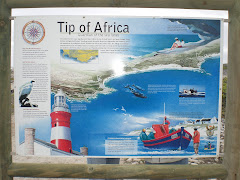
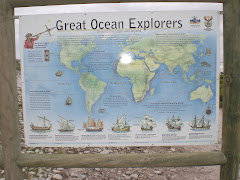
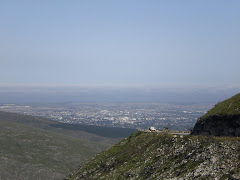

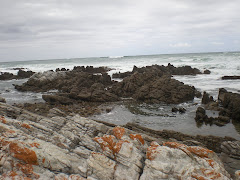
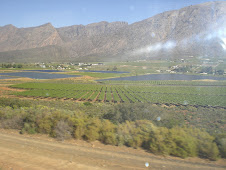
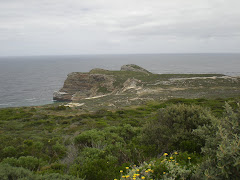
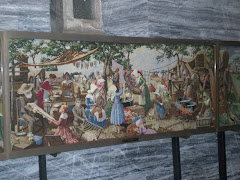








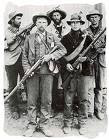



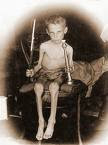

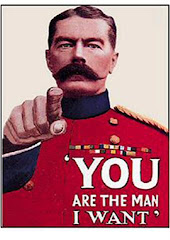.jpg)

.jpg)
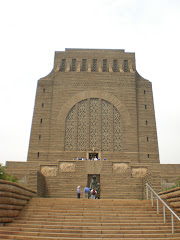


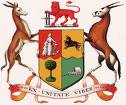



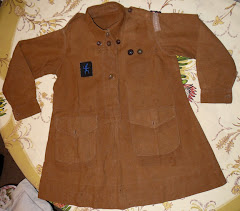



2 comments:
I'm completely shocked! I live in South Africa and yet I knew none of this, except of course about the Dutch, French and German in my ancestry.
How come we were never taught in school about the atrocities?
Powerful. Compelling! I, too, did not know about this.
I follow all your blogs and find them really interesting.Pity that so many of the comments apear as "Anonymous".
May I point out, as I have done with your others, that the URL part in th "Name/Url" thing is misleading. I bet that many people don't realize that all it means is that you can use your name or a pseudonym.
Post a Comment